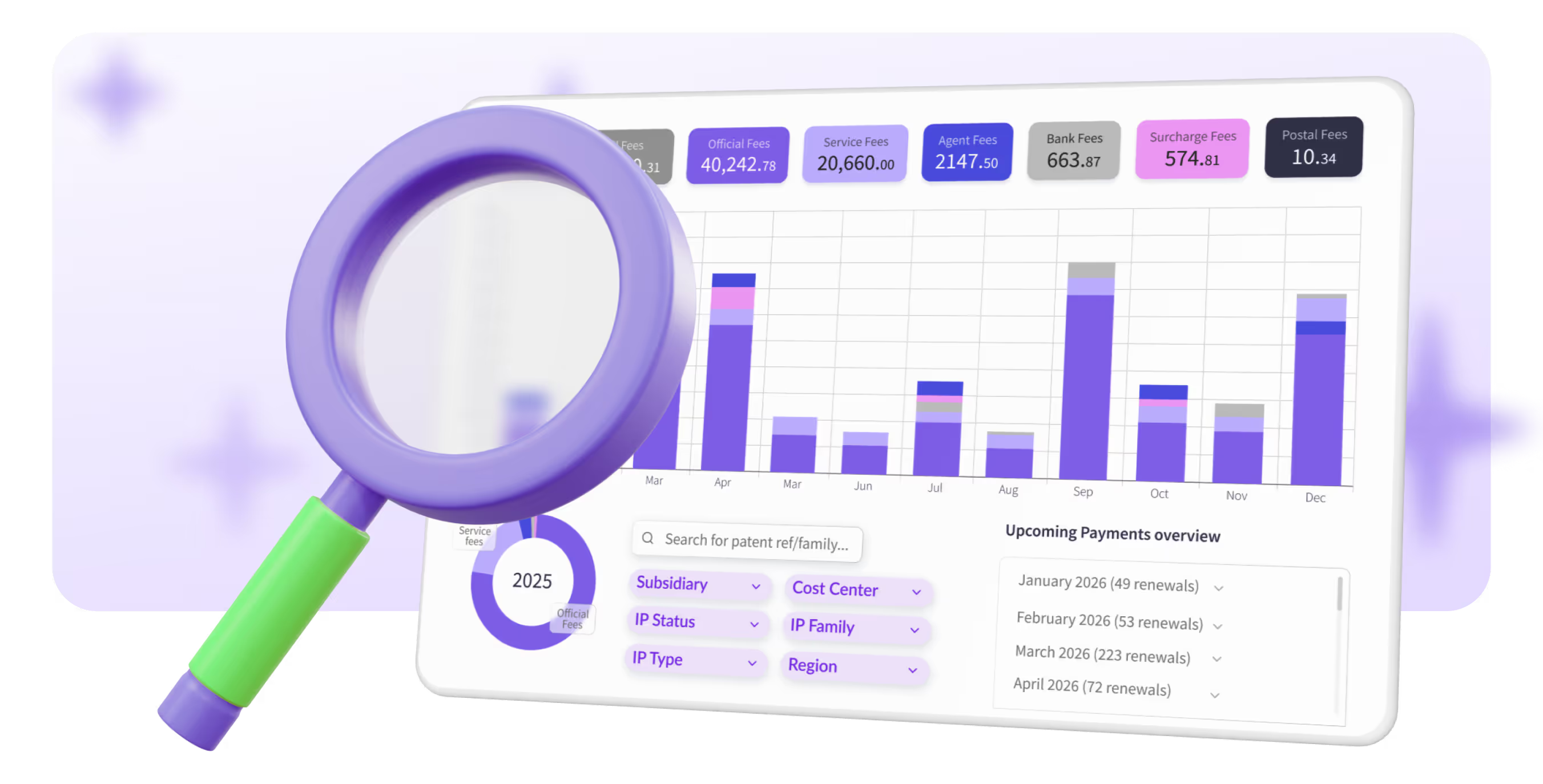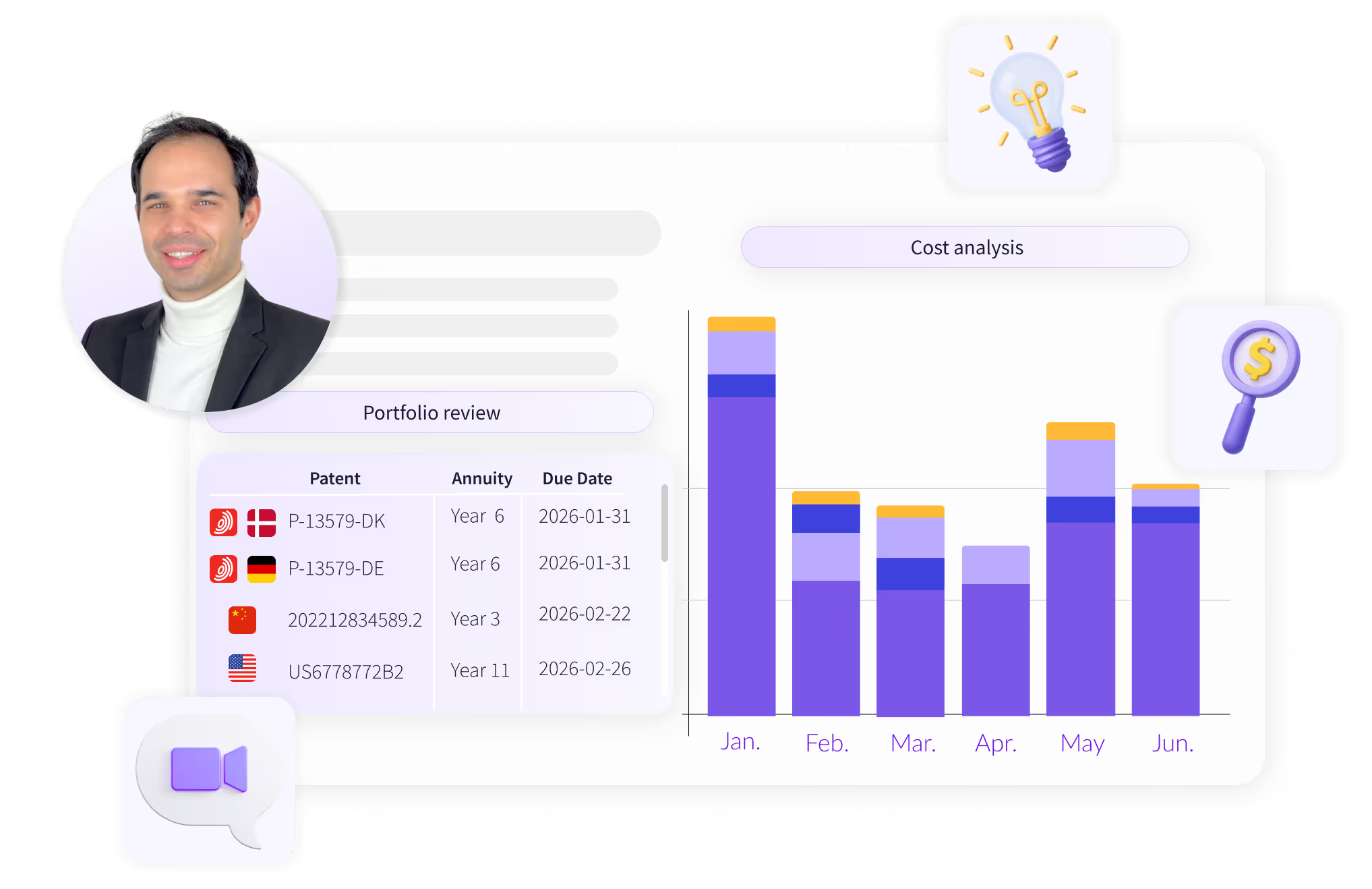TRY OUR NEW (FREE) IP RENEWAL COST CALCULATOR
Calculate
.avif)
Patent infringement is a pressing concern for patent holders worldwide. With the increasing pace of innovation and competitive markets, understanding the different types of patent infringement is essential for protecting intellectual property rights, since it can severely impact a patentee's market share, revenue, and reputation.
Our guide explores the main types of patent infringement, provides real-world examples, and offers practical advice on how to avoid and address infringement.
Patent infringement refers to the unauthorized use, production, sale, or importation of a patented invention. It involves the violation of the exclusive rights granted to a patent holder. These exclusive rights allow the patent holder to prevent others from making, using, selling, or distributing the patented invention without permission.
The specific definitions and legal implications can vary by country, but the core concept remains the same worldwide. However, the enforcement of these laws and the exact legal definitions can vary between jurisdictions. In Europe, the European Patent Convention (EPC) governs patents, with infringement generally defined under national laws of member states, while in the US, it is governed by federal law.
Understanding the different types of patent infringement can help you identify potential risks and take appropriate actions to protect your innovations. Both US and European law recognize these types of infringement, although the enforcement procedures may differ.
The main types include:
Additionally, there are less common forms, such as the doctrine of equivalents and importation infringement. Next, you can read about these main categories in further detail to understand the differences and potential similarities.
Direct infringement is the most straightforward type of patent infringement. It involves the unauthorized production, use, sale, or importation of a patented product or process. This form of infringement requires no intent or knowledge of the patent; merely performing the infringing act is enough. For example, if a company manufactures and sells a product that is covered by a patent without obtaining a license, it directly infringes the patent holder's rights.
As previously mentioned in the top 5 biggest cases of patent infringement article, the lawsuit between Apple and Samsung represents a notable case of direct infringement, when Apple accused Samsung of copying its iPhone designs.
Indirect infringement occurs when a party contributes to or induces another party to infringe on a patent. Unlike direct infringement, indirect infringement involves some level of knowledge or intent. There are two primary forms of indirect infringement: contributory infringement and induced infringement.
Contributory infringement involves supplying a component that is specifically designed to be used in a patented invention, knowing that it will be used to infringe the patent. For instance, if a company sells a specialized part that can only be used in a patented device, and knows that the part will be used to infringe the patent, it is guilty of contributory infringement.
An outstanding example is the case between LG Electronics and ASKO Appliances, where ASKO was found to have supplied washing machine parts that contributed to the infringement of LG's patents. The court ruled in favor of LG, demonstrating the serious consequences of contributory infringement.
Induced infringement occurs when one party actively encourages another to infringe on a patent. This can include providing instructions, plans, or assistance that leads to the unauthorized use of a patented invention. The key element in induced infringement is the intent to cause infringement.
An example of induced infringement is the case of SEB S.A. and Montgomery Ward & Co., where SEB sued Montgomery Ward for selling deep fryers that infringed on SEB's patent. The court found that Montgomery Ward had induced infringement by contracting with a manufacturer to produce the infringing products and providing them with instructions on how to do so.
Willful infringement is a severe form of infringement where the infringer knowingly violates a patent. This type of infringement often leads to enhanced penalties, including higher damages, attorney fees, and court costs. Willful infringement demonstrates a blatant disregard for the patent holder's rights.
A high-profile example of willful infringement is the case between Carnegie Mellon University and Marvell Technology Group. Carnegie Mellon sued Marvell for willfully infringing on its patents related to hard disk drive technology.
Beyond the main types, there are other, less common forms of patent infringement that patent holders should be aware of:
To avoid patent infringement and protect your innovations, consider these practical steps:
1. Conduct thorough patent searches: Before developing new products, perform comprehensive searches to ensure your innovations do not infringe existing patents.
“One effective strategy to prevent patent infringement is conducting a Freedom to Operate (FTO) search. Essentially, an FTO search allows you to explore whether you can freely operate, market, or commercialize your new technology or product. Performing this search during the conceptual phase of your product development is particularly risk-efficient and safer for your business. You can start by searching for patent keywords related to your product's features to check if similar patents already exist. Although the freedom to operate can be broader in less competitive fields, such as interior decoration, you can also pinpoint and eliminate any patented features from your design to mitigate infringement risks. Another strategy I recommend is undertaking a Preliminary Patent Review. While it's not as comprehensive as a full patent review, this initial step can help assess the risk of your product infringing on existing patents early in the development process” Michael Brown (Managing Partner, Dribbin & Brown Criminal Lawyers)
2. Monitor the market: Regularly check the market for potential infringements and even try to keep in contact with your competitors. This proactive approach helps you identify and address infringements in the earliest stage.
“One strategy I've found effective for avoiding patent infringement is to directly contact your competitors. There might be instances where you can't find detailed information about your competitors' patent claims online, or you might already have the information but seek additional confirmation that your product doesn’t infringe on their patents. Reaching out to your competitors can show due diligence, which is favorable in court if infringement charges are brought against you later. Moreover, if your competitors initially confirm that your product does not infringe on their patents but later decide to file infringement claims, they may be legally barred from doing so due to their prior acknowledgment.” Rosana Tejada Crespo (CEO, Tejada Solicitors Law Firm)
3. Seek legal advice: Consult with IP attorneys to navigate complex patent laws and ensure your actions comply with legal requirements.
4. Utilize patent licensing: Licensing agreements can provide legal authorization to use patented technologies, reducing the risk of infringement.
Additionally, having a defensive patent insurance policy can provide significant protection.
“Despite your best efforts, there's always a risk that you might end up facing a patent infringement lawsuit. That’s why it’s crucial to have a defensive patent insurance policy. This type of insurance can safeguard you against the financial risks arising from such lawsuits. Most defensive patent insurance policies are comprehensive, covering litigation fees, settlement fees, and damages if you lose the case. As long as you keep up with the insurance premiums, this policy provides significant peace of mind.” Rosana Tejada Crespo (CEO, Tejada Solicitors Law Firm)
By staying informed about the different forms of infringement and taking proactive steps to safeguard your innovations, you can significantly reduce legal risks and ensure the longevity of your patents.
Key insights include conducting FTO searches, performing Preliminary Patent Reviews, and considering defensive patent insurance policies. These strategies, combined with regular market monitoring and seeking legal advice, will help you protect your valuable IP assets.
If you are an inventor or patent holder yourself and are interested in cost-effective digitalized patent renewals, get to know how you can upgrade your current IP management setup with our patent renewal software.
Interested in a free IP renewal consultation? Benchmark your current IP renewal setup and costs against market standards.
